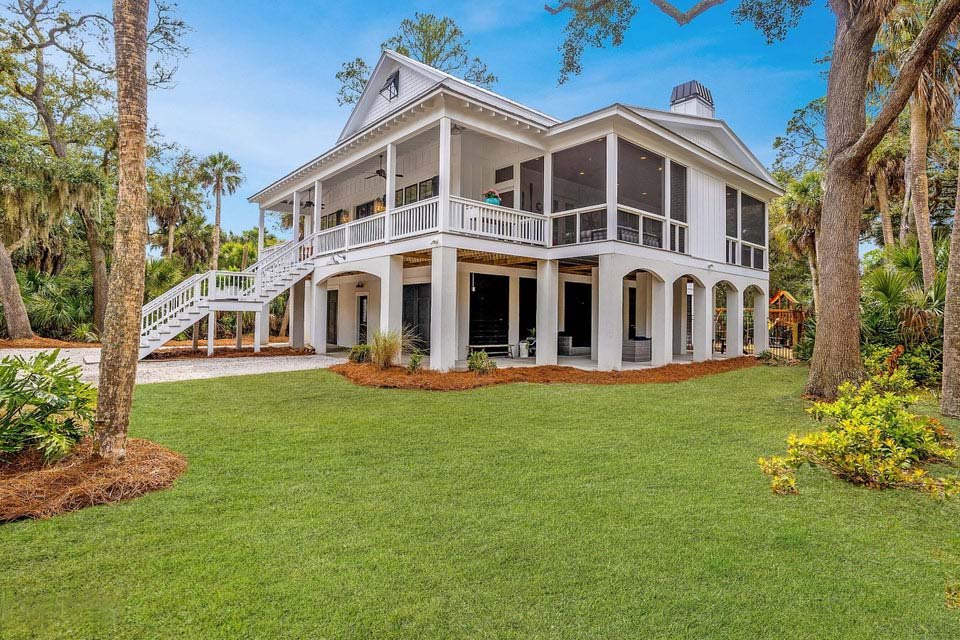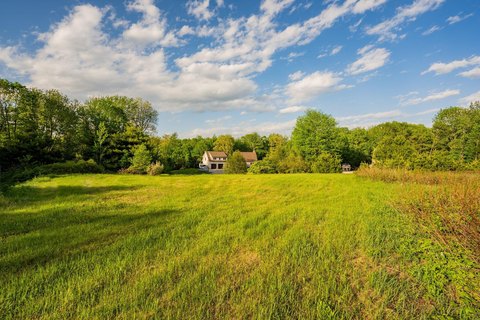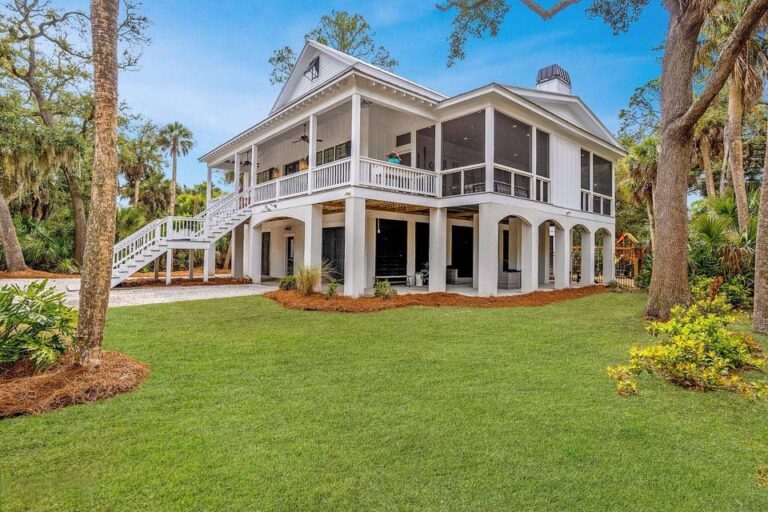In 2017, Chris worked at a corporate job in downtown Chicago, where he started dreaming about investing in real estate. It was a dream that seemed far off, given the seemingly daunting financial requirements. But everything changed one Friday evening while chatting with a colleague, who mentioned a commercial land for sale on the outskirts of town. The previously overlooked location was now a growing hub for industrial developments and mixed-use properties. Intrigued, Chris researched the area and saw potential. He decided to leap, pulling together his savings for the down payment on the land. Fast forward to 2023, and that once vacant plot is now home to a bustling business park, tripling the value of his initial investment. Chris’s story is one of vision, risk, and reward, underscoring the significance of commercial land investment in today’s market.
While Chris’s journey might sound like a lucky break, it is, in reality, the result of careful research and seizing opportunities at the right time. Purchasing commercial land for sale can be one of the most rewarding investments in real estate, but it requires understanding the market, evaluating the right locations, and considering long-term potential. This article explores the dynamics of the commercial land market, outlines critical factors to consider, and highlights some trends shaping the industry today.
The Commercial Land Market: Growth and Demand
The market for commercial land has undergone significant changes in recent years, influenced by economic growth, urbanization, and shifting trends in business infrastructure. According to a 2023 report from Statista, the global commercial real estate market was valued at $33.3 trillion, with land sales contributing to a sizable portion of this figure. The demand for commercial land is driven by developers, investors, and businesses looking to establish operations in strategic locations.
In the United States, the demand for commercial land is expected to grow by 6.5% annually between 2023 and 2028, fueled by urban expansion and the increasing need for logistics, e-commerce, and mixed-use developments, as reported by IBISWorld. As businesses evolve and shift towards online retail, logistics hubs, and data centres, the types of commercial land required are also changing. The e-commerce boom, in particular, has led to a surge in demand for industrial land to build warehouses and distribution centres close to major highways and urban centres.
Meanwhile, urbanization is pushing the boundaries of commercial real estate development. Many metropolitan areas are seeing an influx of mixed-use projects, combining retail, office spaces, and residential units into a single development. This trend has not only revitalized inner-city areas but also increased the value of commercial land in these prime locations.
Types of Commercial Land: Exploring Opportunities
When exploring commercial land for sale, it is crucial to understand the different categories available and their respective opportunities. Not all commercial land is created equal, and the type of land you invest in will determine the kind of businesses or developments that can be built on it. Here are the main categories of commercial land:
- Retail Land
Retail land is zoned for shopping centres, strip malls, and standalone stores. The demand for retail land varies based on location, with urban areas typically commanding higher prices due to foot traffic and proximity to residential zones. While the traditional retail market has seen fluctuations due to the rise of e-commerce, prime retail land in urban centres remains highly valuable.
According to a 2022 report by Deloitte, while brick-and-mortar retail is evolving, it is still around. Retailers adapt by creating experiential stores that attract customers through in-person shopping experiences. This shift means investing in retail land, particularly in high-traffic areas, can still be lucrative, especially considering long-term developments incorporating physical stores and online order fulfilment centres.
- Industrial Land
Industrial land is used for warehouses, factories, distribution centres, and logistics hubs. E-commerce has significantly increased demand for industrial land, particularly near major transportation routes, airports, and ports. Companies like Amazon, Walmart, and FedEx are leading this demand, looking for large tracts of land to build fulfilment centres to meet the growing demand for quick delivery times.
A report by JLL, a commercial real estate services firm, indicated that industrial land absorption rates hit a record high in 2022, with more than 500 million square feet of new warehouse space developed across the United States. The demand for this type of land is projected to continue rising as online shopping grows and supply chains seek to become more efficient.
- Office Land
Office land is used for corporate buildings, co-working spaces, and business parks. While the COVID-19 pandemic significantly impacted office real estate, the long-term demand for office spaces is expected to stabilize as many businesses shifted to remote work. Hybrid work models influence how developers approach office land, focusing on flexibility and creating spaces that foster collaboration.
A survey by Cushman & Wakefield found that by 2023, 70% of companies anticipated a return to office spaces. However, the demand may be for smaller, more flexible spaces rather than large, traditional corporate buildings. As a result, investors are looking at smaller commercial land plots that can accommodate co-working spaces or mixed-use developments incorporating office, retail, and residential spaces.
- Mixed-Use Land
Mixed-use land is becoming increasingly popular as cities seek to maximize land use and create vibrant urban environments. These developments typically include residential units, office spaces, retail stores, and recreational areas within the same complex. Mixed-use land is highly sought after in growing urban centres, as it caters to the demand for live-work-play environments.
According to a PwC report, mixed-use developments will continue to drive urban real estate in 2024 and beyond, especially as more people prefer to live closer to their workplaces and amenities. Investors who purchase mixed-use land in strategic urban locations can benefit from this trend, especially as cities expand their infrastructure to support these developments.
Key Factors to Consider When Buying Commercial Land
While buying commercial land can be lucrative, evaluating several critical factors to ensure success is essential. Unlike residential property, which focuses on immediate usability and neighbourhood amenities, commercial land requires a more strategic, long-term approach.
- Location
As with any real estate investment, location is one of the most important factors. The land’s proximity to transportation hubs, major highways, and urban centres significantly affects its value. For example, industrial land near an interstate highway or a major port will typically command a higher price due to its logistical advantages.
In addition, zoning regulations play a crucial role in determining what can be built on the land. Verifying zoning laws with local authorities is essential to ensure the intended use aligns with legal restrictions.
- Market Trends
Understanding current market trends is vital before making a commercial land investment. This includes analyzing supply and demand for the type of land you’re interested in and the region’s economic outlook. For example, areas with booming population growth are more likely to see increased demand for retail and residential land.
A report by CBRE, a leading real estate advisory firm, showed that Sunbelt cities like Austin, Phoenix, and Orlando are experiencing significant growth in both population and commercial developments, making these regions attractive for long-term investment.
- Environmental and Infrastructure Considerations
Before purchasing land, assessing the environmental factors that could impact future developments is critical. Is the land prone to flooding? Does it require significant clearing or grading? Environmental assessments are often required by law and can reveal issues such as soil contamination or endangered species habitats that may delay or prevent development.
In addition, consider the infrastructure surrounding the land. Access to utilities like water, electricity, sewage systems, and broadband internet will influence the feasibility of commercial land development.
The Future of Commercial Land Investment
The commercial land market is evolving rapidly, influenced by technological advancements, demographic shifts, and the global economy. As more businesses look to expand their physical footprints in key markets, demand for commercial land is expected to rise. According to NAIOP, the Commercial Real Estate Development Association, commercial real estate spending in the U.S. is projected to exceed $1 trillion by 2026, driven by growth in logistics, e-commerce, and mixed-use developments.
Conclusion:
Investing in Commercial Land
Commercial land offers vast opportunities for those willing to research, strategize, and invest wisely. Whether you’re looking to develop an industrial park, a retail centre, or a mixed-use urban hub, the right piece of commercial land can yield significant returns over time. Like Chris, the key to success is recognizing the potential of land others might overlook and turning a vacant lot into a thriving centre of commerce and community.
As the commercial land market grows and evolves, now might be the perfect time to explore available options. With the right approach, commercial land can be a powerful addition to any investment portfolio.















